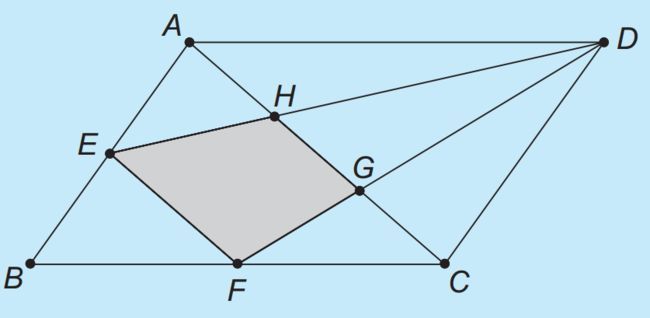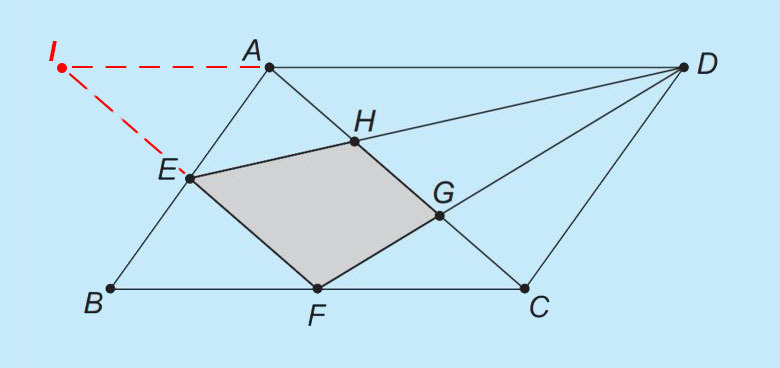Deploying laser beams
 Given a parallelogram
with area of
with points
and
as the midpoint of the lines
and
respectively. What is the area of the quadrilateral
?
Given a parallelogram
with area of
with points
and
as the midpoint of the lines
and
respectively. What is the area of the quadrilateral
?
This section requires Javascript.
You are seeing this because something didn't load right. We suggest you, (a) try
refreshing the page, (b) enabling javascript if it is disabled on your browser and,
finally, (c)
loading the
non-javascript version of this page
. We're sorry about the hassle.
 aEFGH = aDEF - aDGH
aDEF = aABCD - aADE - aCDF - aBEF = 9 = 1/2 x EF x hDEF
aDGH = 1/2 x GH x hDGH
AI = FC = 1/2 BC = 1/2 AD => AD/DI = 2/3
AC // EF => AD/DI = HG/EF = hDGH/hDEF = 2/3
=> aDGH = 1/2 x 2/3 EF x 2/3 hDEF = 4/9 x 1/2 x EF x hDEF = 4/9 x 9 = 4
aEFGH = aDEF - aDGH = 9 - 4 = 5 cm2
aEFGH = aDEF - aDGH
aDEF = aABCD - aADE - aCDF - aBEF = 9 = 1/2 x EF x hDEF
aDGH = 1/2 x GH x hDGH
AI = FC = 1/2 BC = 1/2 AD => AD/DI = 2/3
AC // EF => AD/DI = HG/EF = hDGH/hDEF = 2/3
=> aDGH = 1/2 x 2/3 EF x 2/3 hDEF = 4/9 x 1/2 x EF x hDEF = 4/9 x 9 = 4
aEFGH = aDEF - aDGH = 9 - 4 = 5 cm2